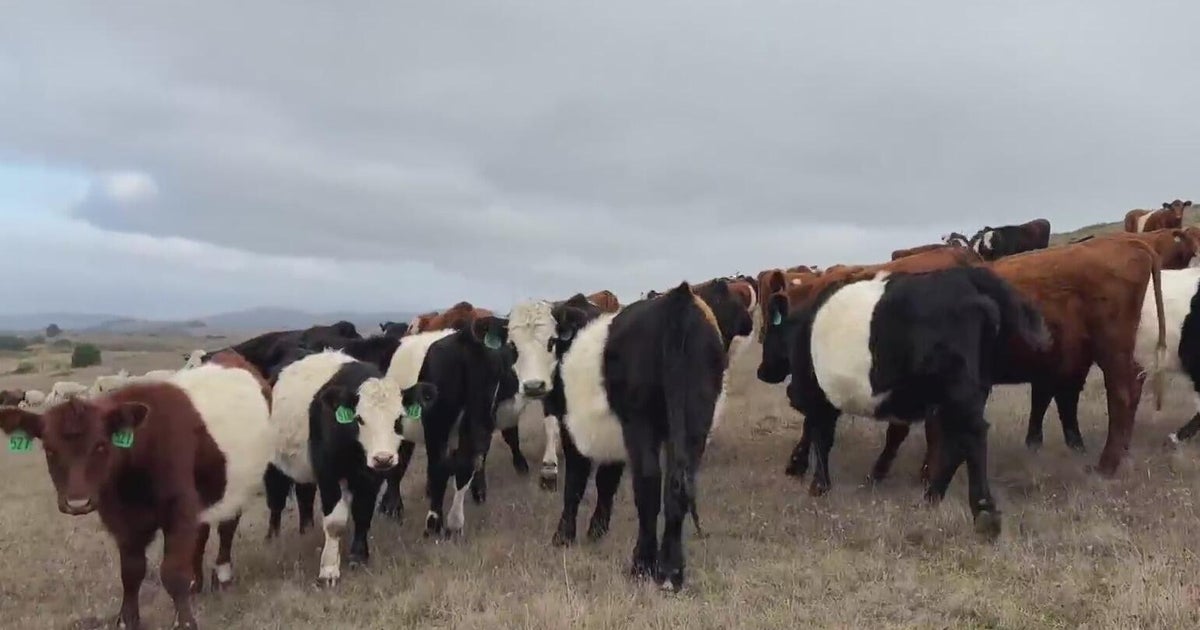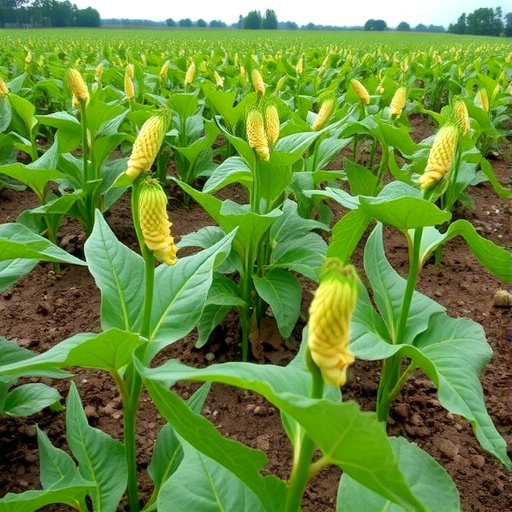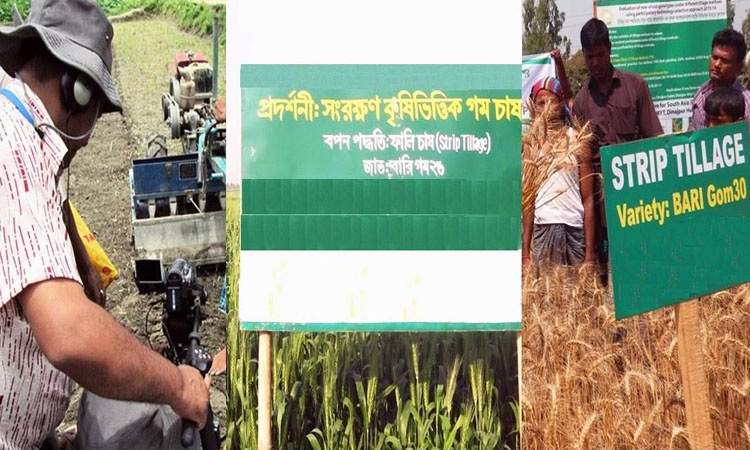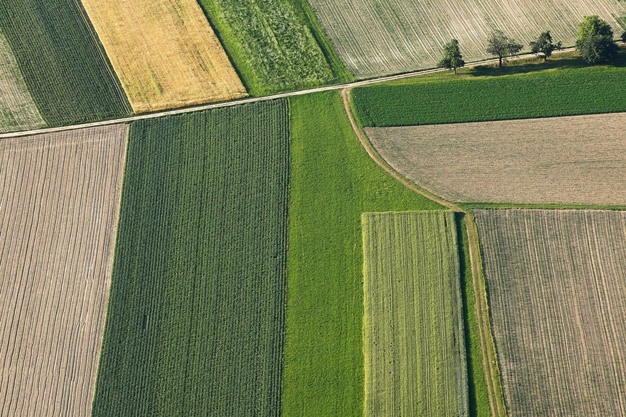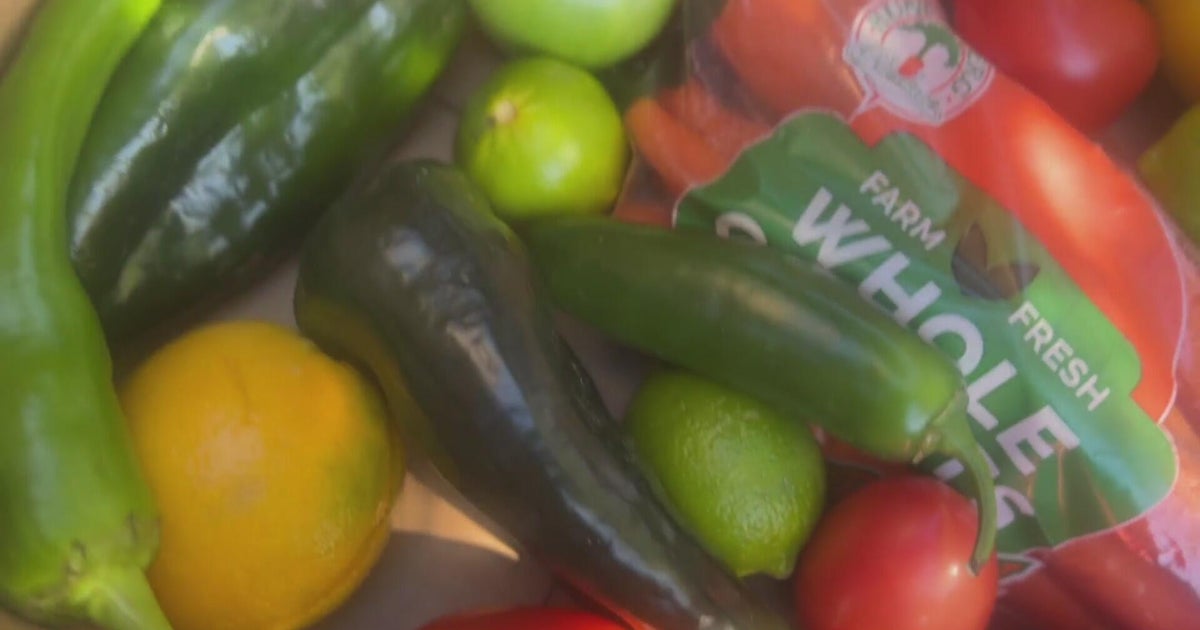Sustainable Agriculture Tanzania: 7 Powerful Trends For 2025 – Farmonaut

Report on the State of Sustainable Agriculture in Tanzania and Projections for 2025
Executive Summary
This report analyzes the transition towards sustainable agriculture in the United Republic of Tanzania, a sector fundamental to the nation’s economy and the livelihoods of over 65% of its population. The analysis highlights the critical alignment of this transition with the United Nations’ Sustainable Development Goals (SDGs). Key findings indicate that the adoption of practices such as organic farming, Climate-Smart Agriculture (CSA), and agroforestry is accelerating, driven by the dual imperatives of mitigating climate change impacts and enhancing food security. These efforts directly contribute to SDG 2 (Zero Hunger), SDG 13 (Climate Action), and SDG 15 (Life on Land). The integration of digital technologies and renewable energy further supports SDG 9 (Industry, Innovation, and Infrastructure) and SDG 7 (Affordable and Clean Energy). While significant progress is noted, persistent challenges in financing, infrastructure, and knowledge dissemination require strategic interventions, including robust public-private partnerships (SDG 17), to ensure a resilient and sustainable agricultural future by 2025.
1.0 Introduction: The Strategic Imperative for Sustainable Agriculture
Agriculture constitutes the backbone of the Tanzanian economy, contributing approximately 30% to the Gross Domestic Product (GDP) and employing over two-thirds of the population. The sector’s performance is therefore intrinsically linked to national progress on SDG 1 (No Poverty) and SDG 8 (Decent Work and Economic Growth). As the country moves towards 2025, the paradigm is shifting from conventional farming to sustainable agriculture. This transformation is not merely a trend but a strategic necessity to address pressing challenges, including climate change, land degradation, and market volatility, thereby securing a foundation for long-term food security and environmental stewardship.
2.0 Current Agricultural Landscape and Systemic Challenges
Tanzania’s agricultural sector is characterized by its smallholder-driven production system, which cultivates a diverse range of staple and cash crops such as maize, rice, coffee, tea, and cashew nuts. Despite its importance, the sector faces significant constraints that impede its potential and threaten the achievement of SDG 2 (Zero Hunger).
- Low Productivity: Limited access to modern technology, quality inputs, and extension services results in suboptimal yields.
- Climate Vulnerability: Increased frequency of droughts and floods, linked to climate change, directly impacts farming systems and jeopardizes food production, highlighting risks to SDG 13 (Climate Action).
- Land Degradation: Unsustainable farming practices have led to soil health deterioration, impacting long-term productivity and contravening the principles of SDG 15 (Life on Land).
- Value Chain Inefficiencies: Inadequate infrastructure for storage and transport contributes to significant post-harvest losses and limits market access for smallholders.
3.0 Innovations Aligning Tanzanian Agriculture with Sustainable Development Goals
A range of innovative practices is being adopted across Tanzania to build a more resilient and productive agricultural sector, with each practice contributing to specific SDGs.
3.1 Conservation and Organic Agriculture for Soil Health (SDG 2, SDG 12, SDG 15)
Conservation agriculture, which involves minimum tillage, cover cropping, and mulching, is increasingly utilized to enhance soil moisture retention and reduce erosion. Concurrently, a shift towards organic farming is evident, driven by both ecological benefits and international market demand for sustainably produced goods. In 2023, over 40% of Tanzanian farmers adopted organic fertilizers. These practices directly support responsible production patterns (SDG 12) and protect terrestrial ecosystems (SDG 15).
3.2 Climate-Smart Agriculture (CSA) for Resilience (SDG 13)
Climate-Smart Agriculture (CSA) integrates strategies to increase productivity, enhance resilience, and reduce greenhouse gas emissions. Key interventions include the promotion of drought-resistant crop varieties and the dissemination of climate information services, which are vital for adapting to and mitigating the effects of climate change (SDG 13).
3.3 Agroforestry for Biodiversity and Livelihoods (SDG 1, SDG 15)
The integration of trees with crops and livestock through agroforestry systems is gaining traction. This practice enhances soil fertility, prevents erosion, increases biodiversity, and provides diversified income streams from timber and non-timber products, contributing to poverty reduction (SDG 1) and the sustainable management of land (SDG 15).
3.4 Digital Transformation and Renewable Energy (SDG 7, SDG 9)
The adoption of digital technologies provides farmers with access to real-time data on weather, crop health, and markets, fostering innovation as per SDG 9. Simultaneously, the integration of renewable energy, particularly solar-powered irrigation systems, is reducing dependency on fossil fuels and operational costs, advancing progress on SDG 7 (Affordable and Clean Energy).
4.0 Key Trends Shaping the Agricultural Sector towards 2025
Seven powerful trends are projected to define the trajectory of sustainable agriculture in Tanzania by 2025, each reinforcing the nation’s commitment to the SDGs.
- Climate-Smart Agriculture (CSA) Integration: Widespread adoption of adaptive practices to ensure yield consistency amid changing weather patterns (SDG 13).
- Water Conservation and Irrigation Efficiency: Deployment of technologies like micro-irrigation to manage water resources sustainably (SDG 6).
- Organic and Regenerative Farming Growth: Expansion of methods that restore soil health and reduce chemical dependency, meeting global demand for responsible production (SDG 12).
- Agroforestry Expansion: Increased integration of trees in farming systems to enhance biodiversity and diversify incomes (SDG 15, SDG 1).
- Precision Agriculture and Digital Tools: Leveraging satellite data and AI to optimize resource management and decision-making (SDG 9).
- Renewable Energy Integration: Scaling up solar-powered farm operations to reduce emissions and operational costs (SDG 7).
- Data-Driven Extension Services: Utilizing digital platforms to expand farmer access to advisory services and market information, bridging knowledge gaps.
5.0 Policy Framework and Institutional Roles
The Government of Tanzania plays a central role in creating an enabling environment for this sustainable transformation. Policy instruments such as the Agriculture Sector Development Programme (ASDP) are critical for directing investment towards research, irrigation, and extension services. Investments in rural infrastructure, including roads and storage facilities, are essential for reducing post-harvest losses and improving market linkages, thereby strengthening value chains in line with SDG 9.
6.0 Overcoming Barriers to Sustainable Transformation
Despite positive momentum, several challenges impede the widespread adoption of sustainable practices:
- Limited Access to Finance: Smallholders lack access to affordable credit required for investing in sustainable technologies.
- Knowledge and Capacity Gaps: Inequitable access to training and advisory services hinders the adoption of innovative practices.
- Land Tenure Insecurity: Ambiguous land rights disincentivize long-term investments in soil and water conservation.
- Infrastructure Deficits: Poor rural infrastructure increases operational costs and limits market participation.
7.0 Recommendations and Path Forward
To accelerate the transition to sustainable agriculture by 2025 and beyond, a multi-faceted approach is required:
- Strengthen Public-Private Partnerships (SDG 17): Foster collaboration to drive investment in innovation, technology, and infrastructure.
- Expand Digital Extension Services: Leverage mobile technology to deliver timely and accessible advisory services to all farmers.
- Enhance Financial Inclusion: Develop and promote financial products, such as affordable credit and insurance, tailored to the needs of smallholder farmers.
- Invest in Rural Infrastructure: Prioritize public investment in roads, storage, and market facilities to create efficient value chains.
- Promote Secure Land Tenure: Implement policies that clarify and secure land rights to encourage long-term sustainable land management.
8.0 Conclusion
The transition to sustainable agriculture is a fundamental necessity for Tanzania’s future development. Achieving this goal requires a concerted effort to integrate innovative practices, supportive policies, and transformative technologies. By aligning its agricultural sector with the Sustainable Development Goals, Tanzania can build a resilient food system, promote environmental stewardship, and ensure prosperous livelihoods for its people. The strategic adoption of trends such as CSA, organic farming, and digital agriculture will be pivotal in navigating challenges and realizing a competitive and sustainable agricultural market by 2025.
SDGs Addressed in the Article
-
SDG 1: No Poverty
The article highlights that agriculture engages over 65% of Tanzania’s population and is the backbone of their livelihoods. By promoting sustainable practices that increase productivity, resilience, and income (e.g., “18% higher average incomes for practicing farmers” in agroforestry), the article directly addresses the goal of eradicating poverty.
-
SDG 2: Zero Hunger
This is a central theme. The article repeatedly emphasizes “food security” as a primary goal of sustainable agriculture in Tanzania. It discusses increasing yields, building resilience to climate change, and improving productivity through practices like conservation agriculture and climate-smart agriculture to ensure a stable food supply.
-
SDG 6: Clean Water and Sanitation
The article explicitly mentions “Water conservation and Irrigation Efficiency” as a key trend. It discusses the need to “reduce water use” and deploy “micro-irrigation and solar pumps” to achieve “up to 40% water savings,” which directly relates to the sustainable management of water resources.
-
SDG 7: Affordable and Clean Energy
The trend of “Renewable Energy Integration” is identified, specifically mentioning the scaling up of “solar-powered irrigation” and farm operations. This aims to reduce greenhouse gas emissions and cut costs, contributing to the adoption of clean energy.
-
SDG 8: Decent Work and Economic Growth
The article states that agriculture contributes “approximately 30% to the nation’s GDP.” By focusing on improving productivity, efficiency, and creating new opportunities in export markets (e.g., organic coffee and tea), the initiatives support sustained economic growth and productive employment.
-
SDG 9: Industry, Innovation, and Infrastructure
A significant portion of the article is dedicated to innovations like “Precision Agriculture & Digital Tools,” “satellite data, AI, and digital apps,” and “Digital Agriculture and Data-Driven Extension Services.” It also mentions the need for infrastructure investments in “rural roads” and “storage facilities” to build resilient infrastructure and foster innovation.
-
SDG 13: Climate Action
The article is framed around the challenges of climate change. It promotes “Climate-Smart Agriculture (CSA)” as a top trend to “mitigate the impact of climate change” and build resilience against “changing weather patterns,” droughts, and floods. It also mentions reducing greenhouse gas emissions through renewable energy and carbon footprinting.
-
SDG 15: Life on Land
The article extensively covers practices aimed at protecting terrestrial ecosystems. It discusses combating “land degradation,” improving “soil health management,” preventing “erosion” through conservation agriculture, and enhancing “biodiversity” through agroforestry, all of which are central to this SDG.
Specific SDG Targets Identified
-
SDG 2: Zero Hunger
- Target 2.3: Double the agricultural productivity and incomes of small-scale food producers. The article supports this by focusing on smallholders and promoting practices like agroforestry, which is estimated to lead to “18% higher average incomes,” and climate-smart agriculture, which aims for a “20% increase in average yields.”
- Target 2.4: Ensure sustainable food production systems and implement resilient agricultural practices. This is the core message of the article, which details practices like conservation agriculture, organic farming, and climate-smart agriculture that increase resilience and sustainability.
-
SDG 6: Clean Water and Sanitation
- Target 6.4: Substantially increase water-use efficiency across all sectors. The article directly addresses this with the trend of “Water Conservation & Irrigation Efficiency,” aiming for “up to 40% water savings” through technologies like micro-irrigation.
-
SDG 7: Affordable and Clean Energy
- Target 7.2: Increase substantially the share of renewable energy in the global energy mix. The article points to this target by highlighting the trend of “Renewable Energy Integration” and the goal that “50% of new irrigation schemes” will be solar-powered by 2025.
-
SDG 8: Decent Work and Economic Growth
- Target 8.2: Achieve higher levels of economic productivity through diversification, technological upgrading and innovation. The article discusses this through the adoption of digital tools, precision agriculture, and diversification into high-value export crops like organic coffee and tea.
-
SDG 9: Industry, Innovation, and Infrastructure
- Target 9.1: Develop quality, reliable, sustainable and resilient infrastructure. This is addressed through the stated need for government investment in “rural roads, storage facilities, and market access networks.”
- Target 9.c: Significantly increase access to information and communications technology. The article highlights this with trends like “Digital Agriculture & Data-Driven Extension,” aiming for “70% farmers with mobile/web access to farm data” and “80% of extension workers use digital tools.”
-
SDG 13: Climate Action
- Target 13.1: Strengthen resilience and adaptive capacity to climate-related hazards and natural disasters. The article’s focus on Climate-Smart Agriculture (CSA) directly supports this by promoting “drought-resistant crops” and practices that help communities “adapt to changing climate patterns.”
-
SDG 15: Life on Land
- Target 15.3: Combat desertification, restore degraded land and soil. This is addressed through the promotion of “conservation agriculture,” “organic farming,” and “agroforestry” to improve “soil health,” “reduce erosion,” and reverse “land degradation.”
Indicators for Measuring Progress
-
For SDG 2 (Zero Hunger) & SDG 8 (Decent Work and Economic Growth)
- Indicator: Percentage increase in agricultural yields. The article projects a “20% increase in average yields” by 2025.
- Indicator: Percentage of farmers adopting sustainable practices. The article states that “over 40% of Tanzanian farmers adopted organic fertilizers” in 2023 and that “Conservation agriculture practices increased by 35% among Tanzanian smallholders between 2020 and 2024.”
- Indicator: Percentage increase in farmer income. The article estimates “18% higher average incomes for practicing farmers” who adopt agroforestry.
- Indicator: Contribution of agriculture to GDP. The article provides a baseline of “approximately 30%.”
-
For SDG 6 (Clean Water and Sanitation)
- Indicator: Percentage of water savings in agriculture. The article mentions that new technologies can lead to “up to 40% water savings.”
-
For SDG 7 (Affordable and Clean Energy)
- Indicator: Share of renewable energy in new agricultural infrastructure. The article projects that “50% of new irrigation schemes” will be solar-powered by 2025.
-
For SDG 9 (Industry, Innovation, and Infrastructure)
- Indicator: Percentage of farmers with access to digital agricultural data/tools. The article projects “70% farmers with mobile/web access to farm data” and “45% of farmers access weather/market data via mobile/web” by 2025.
- Indicator: Percentage of extension workers using digital tools. The article estimates “80% of extension workers use digital tools” by 2025.
-
For SDG 13 (Climate Action)
- Indicator: Percentage of farmers adopting climate-resilient crops. The article projects “30% more farmers adopting drought-resistant crops” by 2025.
- Indicator: Reduction in climate-related agricultural losses. The article estimates a “15% reduction in climate-related losses” by 2025.
-
For SDG 15 (Life on Land)
- Indicator: Percentage increase in farms practicing agroforestry. The article projects that “Total agroforestry farms up by 25%” by 2025.
SDGs, Targets, and Indicators Analysis
| SDGs | Targets | Indicators |
|---|---|---|
| SDG 1: No Poverty | Improve livelihoods and incomes for the 65% of the population engaged in agriculture. | “18% higher average incomes for practicing farmers” (agroforestry). |
| SDG 2: Zero Hunger | 2.3: Double agricultural productivity and incomes of small-scale food producers. 2.4: Implement resilient agricultural practices to ensure food security. |
“20% increase in average yields.” “over 40% of Tanzanian farmers adopted organic fertilizers in 2023.” “Conservation agriculture practices increased by 35% among Tanzanian smallholders between 2020 and 2024.” |
| SDG 6: Clean Water and Sanitation | 6.4: Substantially increase water-use efficiency. | “up to 40% water savings” from micro-irrigation. |
| SDG 7: Affordable and Clean Energy | 7.2: Increase the share of renewable energy. | “50% of new irrigation schemes solar” by 2025. “10% drop in diesel costs for rural farms.” |
| SDG 8: Decent Work and Economic Growth | 8.2: Achieve higher levels of economic productivity through technological upgrading and innovation. | Agriculture contributing “approximately 30% to the nation’s GDP.” Increased organic tea/coffee exports. |
| SDG 9: Industry, Innovation, and Infrastructure | 9.1: Develop resilient infrastructure. 9.c: Increase access to ICT. |
“70% farmers with mobile/web access to farm data.” “80% of extension workers use digital tools.” “Digitally managed land area tripling.” |
| SDG 13: Climate Action | 13.1: Strengthen resilience and adaptive capacity to climate-related hazards. | “30% more farmers adopting drought-resistant crops.” “15% reduction in climate-related losses.” |
| SDG 15: Life on Land | 15.3: Combat desertification and restore degraded land and soil. | “Total agroforestry farms up by 25%.” Practices like minimum tillage, cover cropping, and mulching are increasingly adopted to improve soil health. |
Source: farmonaut.com

What is Your Reaction?
 Like
0
Like
0
 Dislike
0
Dislike
0
 Love
0
Love
0
 Funny
0
Funny
0
 Angry
0
Angry
0
 Sad
0
Sad
0
 Wow
0
Wow
0



























;Resize=805#)








































